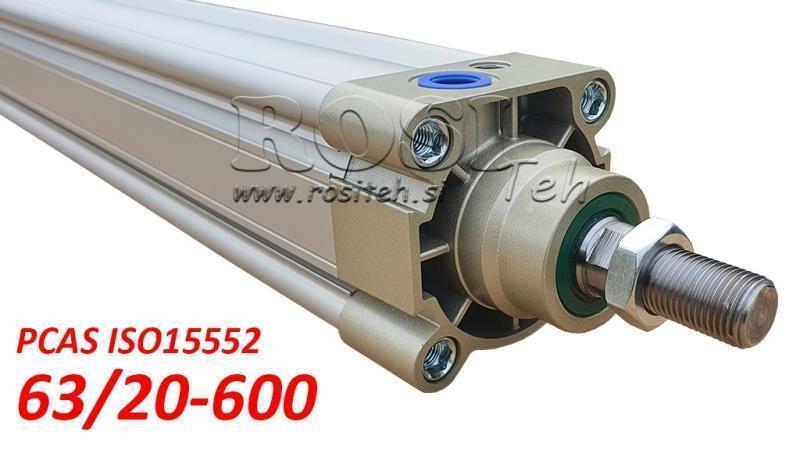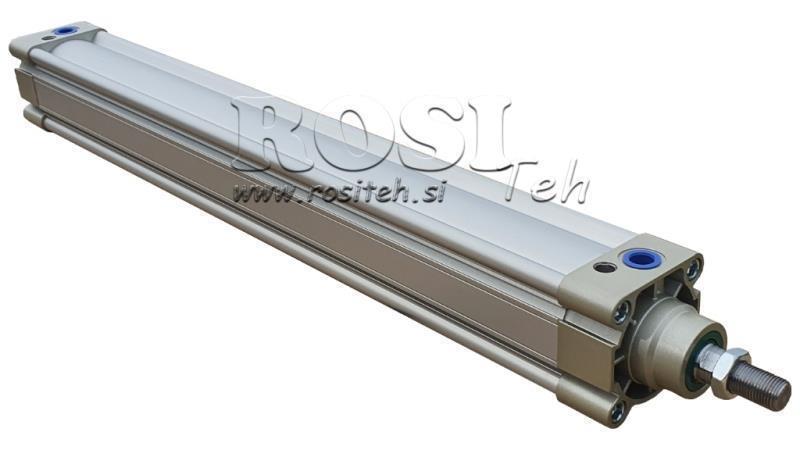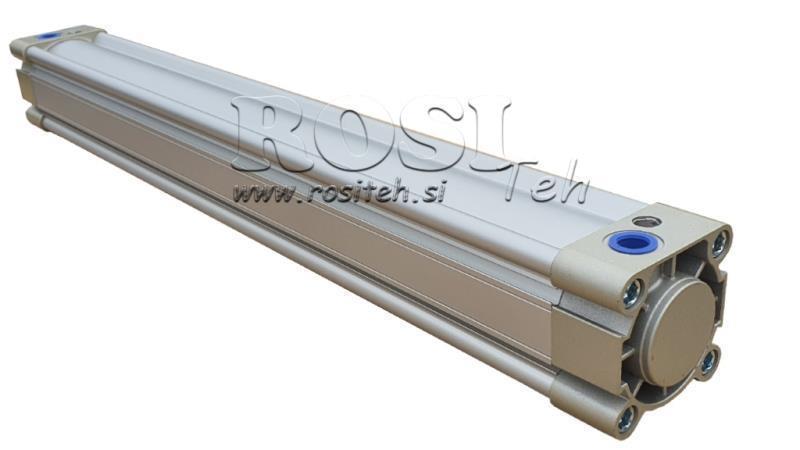PNEUMATIC CYLINDER PCAS 63/20-600 BE ISO15552
|
Supplier: |
Slovenia |
|
Return or exchange: |
14 days |
|
Warranty: |
2 years |
|
Basic version: |
Two way with double-sided pneumatic damping |
|
Medium: |
Filtered air 20 µ |
|
Working pressure: |
1,5 - 10 bar |
|
Test pressure: |
15 bar |
|
Temperature range: |
-20 / +70°C (FKM do +200°C) |
|
Speed: |
30 - 800 mm/s |
|
Damping type: |
Adjustable pneumatic damping |
|
Length of final damping: |
30 mm |
|
Connection: |
G 3/8 |
PNEUMATIC CYLINDERS
Pneumatic cylinders use compressed air to create linear motion. They play a key role in various applications, especially in industry, as they provide a clean, efficient, and reliable method of converting energy into mechanical force. Pneumatic cylinders can ensure fast and precise movements of various segments.
Pneumatic cylinders consist of a tube and a piston. The tube of the pneumatic cylinder is made of metal and provides a closed space for the compressed air. The piston in the pneumatic cylinder divides the internal space into two chambers. It is connected to the piston rod, and its movement creates mechanical work.
Pneumatic cylinders work on the principle of using compressed air to create force and linear motion. When compressed air is supplied to one side of the piston, it pushes the piston rod in the other direction, creating a linear motion. Pneumatic cylinders are usually controlled via solenoid valves that regulate the flow of compressed air into and out of the cylinder.
PCAS BE ISO 15552 pneumatic cylinders are two-way acting with bilateral pneumatic damping. This means that they work both in one and the other direction, or "forward" and "backward". They have a magnet and a profile tube with a groove. They are most commonly used in industry for tasks such as lifting, clamping, pushing, pulling and positioning.



















